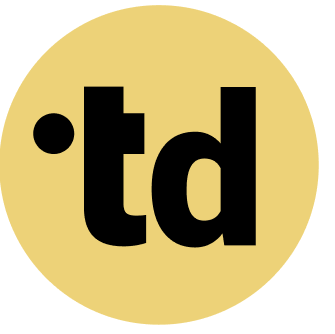Key Takeaways
Proactive workload management, centered on clear roles, can boost team efficiency by up to measurable and reduce the high stress levels reported by 71% of German employees.
Integrating AI agents as defined roles within a hybrid team (humans and AI agents) helps automate tasks and balance workloads, countering the increased stress from digitalization.
Continuous monitoring with simple tools like a 'Workload Weather Report' allows for real-time adjustments, preventing burnout before it starts.
Every team is on a hero's journey, battling the dragons of burnout and overload. The modern workplace, with its endless pings and shifting priorities, often feels like a chaotic battlefield. For Team Architects, the quest is to bring order and clarity, but reactive measures are no longer enough. Proactive workload management is the magic sword, cutting through the confusion before it begins. It's about designing team structures and defining roles so clearly that stress doesn't get a chance to build. By shifting from chaos management to intentional design, you can create a workplace where teams just wanna have fun (and get great work done).
Practical Framework for Team Architects
As a Team Architect, you can apply these principles to your organization:
- Map Current State: Document existing roles and responsibilities using a tool like teamdecoder.
- Identify Gaps: Where are roles unclear? Where do humans and AI agents overlap?
- Define Clear Boundaries: Specify which tasks are handled by humans vs. AI agents.
- Create Accountability: Assign clear decision rights for each role.
- Iterate and Improve: Continuously refine based on team feedback.
Recognize the High Cost of Workload Chaos
The pressure on modern teams is immense, with 66 percent of European employees reporting excessive stress at work. In Germany, this figure climbs to a staggering 71 percent, making it a critical issue for any leader. This isn't just a feeling; it translates into an average of three to six stress-related sick days per employee annually. The financial fallout is massive, as workplace depression alone costs the European Union more than 100 billion euros each year.
Much of this stems from a reactive approach to work. A recent survey found that for many employees, constant time pressure is a major source of stress. Ambiguity is the enemy of calm, and when roles are fuzzy, workloads become unbalanced. This reactive cycle of overload and confusion directly impacts performance and well-being. Understanding these numbers is the first step toward building a better system.
Build Clarity with Well-Defined Team Structures
The antidote to chaos is clarity. When teams have clearly defined roles and responsibilities, performance can improve by up to a significant portion. This isn't a small tweak; it's a fundamental shift in how work gets done. Teams with high role clarity are not just happier-they are more efficient and a significant portion more effective. This is the core of proactive workload management: building a system where Many people knows their part. You can learn more about this in our guide to what is workload management.
Our Playful Tip: Think of your team like a band. Each member has an instrument and a part to play. If the drummer starts playing the guitar solo, you get noise. Define who does what, and you get music. This clarity is even more important in today's world of organizational development, where hybrid teams (humans and AI agents) and new leadership models are common. This structure prevents the overlap and gaps that cause so much stress.
Architect Insight: Design Roles for Balanced Work Distribution
For Team Architects, the real work begins with designing the roles themselves. It's not just about titles; it's about mapping out responsibilities to ensure a fair distribution of work from day one. This is a key part of workload planning techniques. An effective approach involves these steps:
- Map all essential tasks required to meet team goals.
- Group related tasks into logical role clusters.
- Define clear outcomes and KPIs for each role, not just a list of duties.
- Document each role's decision-making authority to empower autonomy.
- Review role distributions quarterly to adapt to new projects, preventing gradual overload on any one person.
Deep Dive: When integrating AI agents into your team, treat them as a role. Define the AI's tasks, responsibilities, and how human team members will interact with it. For example, an AI agent might be responsible for initial data analysis, freeing up a human analyst to focus on strategy. This hybrid team approach, a cornerstone of modern team structures, requires deliberate design to succeed. You can try teamdecoder for free to start mapping these roles today.
Make Bots and Humans Click in Hybrid Teams
Distributed work is here to stay, with most European employees preferring a flexible arrangement. While it offers benefits, it can also hide workload imbalances. Proactive management is essential. Hybrid models, when well-managed, are linked to higher job satisfaction and improved well-being. The key is visibility. Use tools that make workloads transparent, no matter where your team members are located. This helps in reallocating tasks based on capacity.
Digitalization has increased the workload for employees, often due to multitasking and a feeling of being 'Often on'.ed tools can counteract this by automating routine tasks and helping to prioritize work based on team capacity. This allows for smarter, data-driven decisions on who does what, turning your hybrid team into a powerhouse of productivity and well-being.
Implement Continuous Monitoring and Adjustment
Proactive workload management is not a one-time fix; it's a continuous process. Setting up the system is just the start. Regular check-ins and data monitoring are needed to keep workloads balanced. A workload capacity planning template can be an invaluable tool for this. It helps visualize who is working on what and identifies potential bottlenecks before they become problems.
Our Playful Tip: Use a 'Workload Weather Report' in your weekly meetings. Team members can quickly report if they are 'sunny' (manageable workload), 'cloudy' (getting busy), or 'stormy' (overloaded). This simple, playful check-in provides real-time data, allowing for quick adjustments. This approach supports the five key steps of workload management, ensuring long-term balance and stress reduction.
The Result: A Resilient Team That Conquers Chaos
The hero's journey for your team ends not with a single victory, but with newfound resilience. By implementing proactive workload management, you create a system that absorbs shocks and adapts to change without causing burnout. Teams with clear roles and balanced workloads are not just less stressed; they are more innovative and engaged. McKinsey found that high-performing teams, built on this kind of clarity, can achieve a some increase in efficiency.
This is the payoff: a team that feels in control, understands its purpose, and has the energy to tackle big challenges. It's a transformation from a group of overwhelmed individuals into a cohesive, powerful unit. With the right tools and mindset, you can operationalize your strategy and make change feel like play. See our pricing to learn how teamdecoder can help.
Try teamdecoder for free - shape your team and make change feel like play!
More Links
Wikipedia provides a comprehensive overview of work-related stress, detailing its causes, effects, and management strategies.
FAQ
What are the first steps to implementing proactive workload management?
Start by mapping all team tasks and responsibilities. Then, group these into clearly defined roles with specific outcomes. Finally, make this information transparent to the entire team using a tool like teamdecoder to ensure Many people understands their part and how it contributes to the whole.
How often should we review our team's workload distribution?
It's best to review workload distribution on a regular basis, such as quarterly, and also whenever a new major project begins or a team member's role changes. For day-to-day management, quick weekly check-ins are also highly effective.
What is the 'Team Architect's' role in reducing stress?
A 'Team Architect'-be it a consultant, HR leader, or manager-is responsible for designing the team's structure. Their role is to proactively define roles, responsibilities, and workflows to create a balanced, clear, and resilient system that minimizes stress and maximizes performance.





